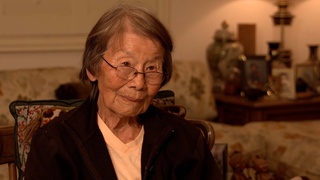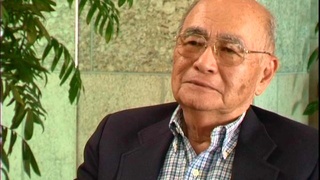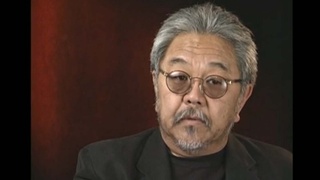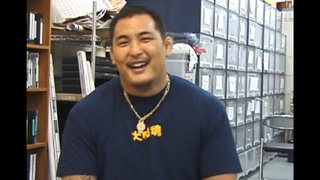Interviews
Being stationed in Japan during the American occupation
They (the Japanese) have great respect for us (Japanese Americans) because it was easy for them to communicate with us and the fact that we spoke Japanese and can communicate with them, they preferred us than dealing with Americans. The Americans were much more impersonal, cold, whereas we could be much more compassionate with them. And also, at that time, there was lack of food and lack of everything including cigarettes, and they smoked a great deal, the Japanese at that time. So we used to give them. We received every week from our unit, a ration of one carton of cigarettes, and also six Babe Ruth candies. So the cigarettes we gave as a gift to our friends and also in connection to our work to get intelligence. The candies we gave to the children at church or wherever. They enjoyed the candies a great deal because everything was short [in supply] in Japan especially sugar was very expensive and short.
Date: May 29, 2006
Location: Hawai`i, US
Interviewer: Akemi Kikumura Yano
Contributed by: Watase Media Arts Center, Japanese American National Museum
Explore More Videos

Joining the army
(1919 - 2015) Nisei who served in World War II with the 442nd Regimental Combat Team

Working as a typist in the army
(b. 1938) Japanese Peruvian incarcerated in Crystal City

Animosity between the Hawaiians and the mainlanders
(1919 - 2015) Nisei who served in World War II with the 442nd Regimental Combat Team

Being scared during combat
(1919 - 2015) Nisei who served in World War II with the 442nd Regimental Combat Team

Never feared that he wouldn’t come back home
(1919 - 2015) Nisei who served in World War II with the 442nd Regimental Combat Team

On saving the Lost Battalion
(1919 - 2015) Nisei who served in World War II with the 442nd Regimental Combat Team

Learning Japanese to speak to relatives in Japan
(b. 1924) Hairdresser. Incarcerated at Poston, Arizona.

His family Traveled to Japan in 1940
(b. 1938) Japanese American. Hiroshima atomic bomb survivor

Moving to and living in Japan
Japanese American Creative designer living in Japan

Devastation in Tokyo after World War II
(b. 1924) Political scientist, educator, and administrator from Hawai`i

Teaching at the military language school during World War II
(b. 1924) Political scientist, educator, and administrator from Hawai`i

Learning English upon discovering that family could not return to Peru
(1930-2018) Nisei born in Peru. Taken to the United States during WWII.

Dealing with racism within army unit in Korea
(b. 1939) Japanese American painter, printmaker & professor

Strict school policy of separating boys and girls in Japan
(b.1920) Japanese Canadian Nisei. Established the Ikenobo Ikebana Society of Toronto

The reason for coming to Japan
(b. 1967) Hawai`i-born professional fighter in Japan
